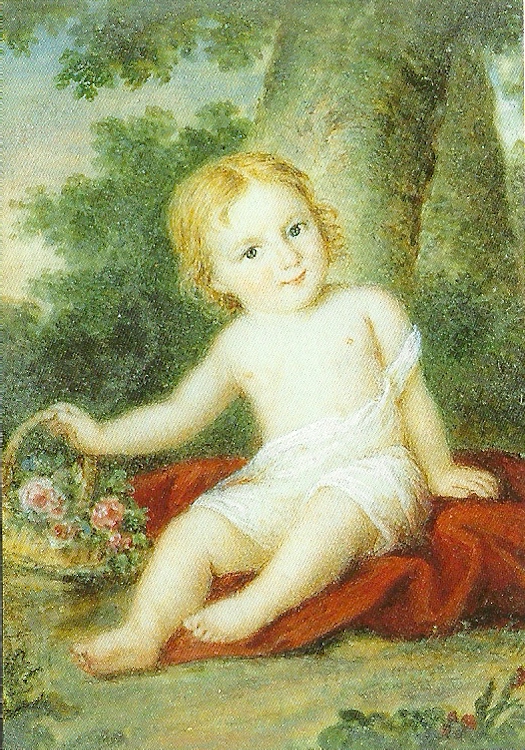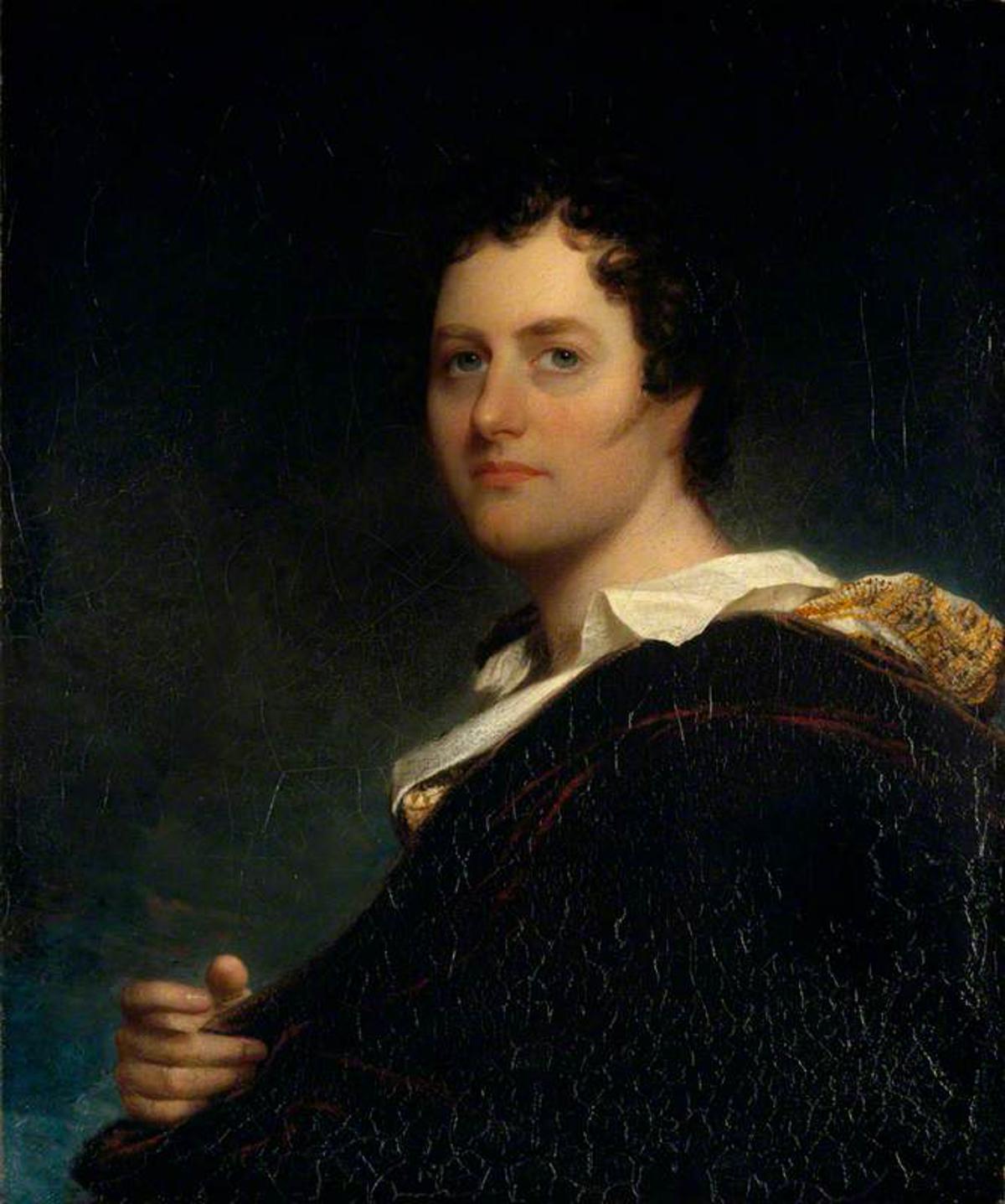Montenero (Livorno), Villa Dupouy
ITA | ENG
Commentary
On May 21, 1822, George Gordon, Lord Byron, arrived at Villa Dupouy, also known as Villa delle Rose and Villa Jermy, and locally referred to as Villa Rossa due to its distinctive facade colour. Henry Dunne, an influential English merchant in Livorno, had recommended this residence to the poet, describing it as “decidedly the best house in Monte Nero.” Byron subsequently leased the villa through a private agreement dated April 9 with Francesco Dupouy, a Livornese merchant and banker.
The decision to relocate from Pisa followed an incident on March 24 involving Byron and his "Pisan circle": Percy Bysshe Shelley, Edward Trelawny, Pietro Gamba, Captain John Hay, and John Taaffe. Returning from the countryside, the group was involved in a violent altercation with Stefano Masi, a sergeant major in the Royal Tuscan Hunters, on the road to Porta alle Piagge. The confrontation continued on the Lungarno, near Palazzo Lanfranchi, Byron's residence in Pisa, and involved both the poet's and the Gambas’ servants. Masi sustained serious injuries, and his life was briefly in jeopardy. Consequently, the Gambas, Byron’s Carbonari friends exiled in Tuscany, were asked to leave Pisa and moved to Livorno, where Byron soon joined them, reuniting with his mistress, Teresa Guiccioli, daughter of Count Ruggero Gamba Ghiselli and sister of Pietro.
During the initial days in Livorno Byron focused on the sombre task of repatriating the body of Allegra, the illegitimate daughter he had with Claire Clermont, Mary Shelley's stepsister. The child had died of typhoid fever in the convent of Bagnacavallo on April 20, 1822. Despite his ambivalent and often indifferent attitude towards the girl, Byron was deeply affected by her loss. A few days after arriving at Villa Dupouy, he wrote to John Murray, entrusting him with the funeral arrangements in England (Lord Byron to John Murray, May 26, 1822). Byron wished Allegra to be buried in Harrow Church, which he had attended as a child, with an inscription identifying her as his daughter. However, due to her illegitimate status, this honor was deemed inappropriate, and Murray could only secure a permit for an anonymous burial within the church.
Byron was a figure of immense renown, and any news concerning him generated significant interest both domestically and abroad. Upon learning of his move to Livorno, the captain of the American squadron in the city's harbor extended an invitation. Byron was received aboard the Constitution with honors tipically reserved for a sovereign. In letters written from Montenero, the poet repeatedly mentioned this visit and recounted the episode of an American woman, Catherine Potter Stith, wife of a naval officer, who requested the rose he wore in his buttonhole. Byron’s letters reveal his pride in his overseas fame (Lord Byron to Douglas Kinnaird, May 26, 1822): he considered his international success – his works were in high demand even in Germany – a form of redress for the “brutality of the English”.
When his friend Trelawny visited Montenero, he was struck by the unsuitability of Villa Dupouy, which he described as “ten times hotter” than Palazzo Lanfranchi in Pisa (Recollections, 1858). Despite being equipped with cisterns and wells, the residence suffered from water shortages due to the intense heat and drought of that summer. This prompted Byron to engage the lawyer Federigo Del Rosso to file a lawsuit against the villa’s owner at Livorno Tribunal.
Despite these inconveniences, Byron greatly appreciated the Montenero residence, in particular the marvelous view of the Mediterranean Sea (Lord Byron to Isaac D'Israeli, June 10, 1822) one could enjoy from its terrace.
As biographer Fiona MacCarthy recalls, Byron’s life in Montenero was peaceful: the poet would rise very late, take long swims, spend evenings with Teresa on the terrace, and nights writing. Between late spring and summer 1822, Byron composed new cantos of Don Juan, his epic-satirical poem in ottava rima. Its publication had previously stirred violent criticism, particularly in England. Teresa herself had insisted the poet cease writing the composition, considering it highly immoral. However, she subsequently consented to its resumption, albeit with the condition that he moderate the protagonist's character and behavior. In the poem, the memory of his daughter Allegra is reflected in Canto X, where he presents Leila, a sweet Turkish orphan, forming “a rather curious couple” with Juan (Don Juan, Canto X, stanzas LIII and LVII).
During his stay at Villa delle Rose, Byron sat for a portrait by William Edward West, now housed in the National Galleries of Scotland (Portrait of Lord Byron, 1822). The American painter repeatedly expressed frustration with Byron, finding him a difficult subject due to his constant shifts between restlessness and embarrassment, loquacity and silence. The final portrait was deemed unsatisfactory, with Teresa Guiccioli describing it as a “grotesque caricature.”
Byron departed Montenero in early July 1822. He wrote to the governor of Livorno (Lord Byron to the Governor of Livorno, July 2, 1822), protesting the expulsion order against the Gambas following a brawl involving their servants. Shortly after, in Pisa, he learned of his friend Shelley's shipwreck.
Luigi Pera recounts Byron's return to Livorno a year later, on July 21, 1823. He stayed for four days, "to stock up on gunpowder, merchandise, and receive other traveling companions aboard the vessel Ercole." Byron was preparing to depart for Greece, where he died on April 19, 1824.
Documents:
I was invited by the Americans on board of their Squadron here and received with the greatest kindness and rather too much ceremony.
They have asked me to sit for my picture to an American Artist now in Florence. – As I was taking leave – an American lady took a rose (which I wore) – from me – as she said she wished to send something which I had about me to America . –– They showed me an American edition of my poems &c. &c. – and all kinds of attention & good will. – I also hear that as an author I am in great request in Germany. – All this is some compensation for the brutality of the native English.
Dear Sir, The body is embarked in what ship I know not neither could I enter into the details; but the Countess G[amba] G[uiccioli] has had the goodness to give the necessary orders to Mr. Dunn – who superintends the embarkation--& will write to you. – I wish it to be buried in Harrow Church – there is a spot in the Churchyard near the footpath on the brow of the hill looking toward Windsor – and a tomb under a large tree (bearing the name of Peachee – or Peachey) where I used to sit for hours & hours when a boy – this was my favourite spot – but as I wish to erect a tablet to her memory – the body had better be deposited in the Church. – Near the door – on the left as you enter – there is a monument with a tablet […] as near it as convenient I would wish Allegra to be buried – and on the wall – a marble tablet placed with these words
In memory of
Allegra –
daughter of G.G. Lord Byron–
who died at Bagnacavallo
in Italy April 20th, 1822,
aged five years and three months, –
“I shall go to her, but she shall not return to me, – ”
2d. Samuel 12,---23,---
The funeral I wish to be as private as is consistent with decency – and I could hope that Henry Drury will perhaps read the service over her – If he should decline it – it can be done by the usual Minister for the time being. – I do not know that I need add more just now. (pp. 163-164)
- Edward John Trelawny, Recollections of the Last Days of Shelley and Byron, London: Moxon, 1858, p. 105.
I condoled with him [Byron] on the change; for his new flimsy-built villa […] was ten times hotter than the old solid palace he had left [Palazzo Lanfranchi], with its cool marble halls, and arched and lofty floors that defied the sun.
I write to you from the Villa Dupuy, near Leghorn, with the islands of Elba and Corsica visible from my balcony, and my old friend the Mediterranean rolling blue at my feet. As long as I retain my feeling and my passion for Nature, I can partly soften or subdue my other passions and resist or endure those of others.
- Lord Byron to the Governor of Livorno, 2 July 1822 (in Byron’s Letters and Journals, IX, pp. 178-79)
Sir—I write to you in English since I know you do us the honour of understanding our language. There has been issued by you an order of arrest and of exile for my courier and an intimation to the family of Count Gamba to leave Tuscany at the end of three days. I am preparing to depart with them as I do not wish to stay any longer in a country where my friends are persecuted and where asylum is denied to the unfortunate. Since I have some affairs to arrange, I beg you to grant them a delay in order that I may depart with them.
Works
Lord Byron, Don Juan, Canto X, London, John Hunt, 1823.
LIII.
Don Juan loved her, and she loved him, as
Nor brother, father, sister, daughter love.--I
cannot tell exactly what it was;
He was not yet quite old enough to prove
Parental feelings, and the other class,
Called brotherly affection, could not move
His bosom,¾for he never had a sister:
Ah! if he had--how much he would have missed her!
LVII.
In fact, the only Christian she could bear
Was Juan; whom she seemed to have selected
In place of what her home and friends once were.
He naturally loved what he protected:
And thus they formed a rather curious pair,
A guardian green in years, a ward connected
In neither clime, time, blood, with her defender;
And yet this want of ties made theirs more tender.
Illustrations
.jpg)
.jpg)
Marcxosm, Villa Dupouy, Front, Montenero, Livorno, 1822. CC Creative Commons Attribution 4.0.

Anon, Allegra Byron, before 1822. Public domain 1.0


William Edward West, George Gordon, 6th Lord Byron 1788-1824, Poet, PG 1561, National Galleries of Scotland.
Bibliography
Byron, Lord, Byron’s Letters and Journals, ed. L.A. Marchand, 11 vols., London, John Murray, 1973-94, vol. IX In the Wind’s Eye.
Canuto, Francesca, Paesaggi, parchi e giardini nella storia di Livorno, Livorno, Debatte, 2015.
Ciorli, Riccardo, Le ville di Montenero, Livorno, Il Gabbiano, 1986.
MacCarthy, Fiona, Byron: Life and Legend, London, John Murray, 2002.
Medwin, Thomas, Conversations of Lord Byron, London, Henry Colburn, 1824.
Niccolini, Giuseppe, Vita di Lord Byron, Milano, Truffi, 1835.
Pera, Francesco, Ricordi e biografie livornesi, Livorno, Francesco Vigo, 1867.
Quennell, Peter, Byron in Italy (1941), London, Collins, 1951.
Rawes, Alan and Diego Saglia (eds), Byron and Italy, Manchester, Manchester University Press, 2017.
Stürzl, Erwin A., A Love’s Eye View. Teresa Guiccioli’s La vie de Lord Byron en Italie, Salzburg, Institut für Anglistik und Amerikanistik Universität Salzburg, 1988.
Trelawney, Edward John, Recollections of the Last Days of Shelley and Byron, London, Edward Moxon, 1858.
Tribolati, Pietro, “Lord Byron a Pisa”, in Id., Saggi critici e biografici, Pisa, Spoerri, 1891, pp. 149-207.
Vigo, Pietro, Montenero in 80 incisioni, Livorno, Fabbreschi, 1902.
______________
Author:
Roberta Ferrari
Dipartimento di Filologia, Letteratura e Linguistica
Università di Pisa
Ultimo aggiornamento
13.11.2025
